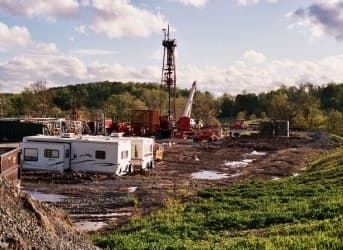The United States Geological Survey (USGS) released the newest oil and gas resource assessment of the Williston Basin for the Bakken Formation in North Dakota and Montana. The new reserve in the Williston is an assessment for the Three Forks Formation in North Dakota, South Dakota and Montana. Together it’s a two-fold increase in the estimated technically recoverable oil, and a three-fold increase in estimated natural gas.

Bakken Total Petroleum System in the Williston Basin.
For clarity, the oil and gas have been there all along. The USGS assessed the area in 2008 with 4,000 more wells having been drilled in the Basin, providing updated subsurface geologic data. The new well data exposed far more information on the Three Forks Formation that was previously thought to be unproductive. The new well data resulted in a new understanding of the reservoir and its resource potential. This part of the assessment is based on real data obtained by the states.
Related article: Oil Exploration Making Inroads into Tunisia

Drill Rig Working the Bakken Formation in North Dakota. Image Credit: Stephanie Gaswirth, USGS.
The next point is the term “technically recoverable”; production processes using currently available technology and industry practices. That means as much as the oil producers are willing to share. It’s a very competitive business and the readily available technology is what the USGS is able to use. The leading edge of techniques and highest technology is surely under wraps and not in view just yet.
Still, the USGS is the only provider of publicly available cumulative estimates of discovered technically recoverable oil and gas resources of the US onshore and state waters. It’s pretty good data in a freewheeling free market.
The USGS oil assessment found that the Bakken Formation has an estimated mean oil resource of 3.65 billion barrels of oil (BBO) and the Three Forks Formation has an estimated mean resource of 3.73 BBO, for a total of 7.38 BBO. The probability ranges from 4.42 (95% chance) to 11.43 BBO (5% chance).
Related article: Saudis Dare U.S. to Play Oil Ball
The assessment of both formations represents a significant increase over the estimated mean resource of 3.65 billion barrels of undiscovered oil in the Bakken Formation that was estimated in the 2008 assessment. The numbers suggest a doubling and history shows the USGS comes in under the actual production, making the doubling quite probable.
The Bakken and the Three Forks combined are estimated to contain a mean of 6.7 trillion cubic feet of undiscovered, technically recoverable natural gas and 0.53 billion barrels of undiscovered, technically recoverable natural gas liquids. The gas estimates range from 3.43 (95% chance) to 11.25 (5% chance) trillion cubic feet of gas and 0.23 (95% chance) to 0.95 (5% chance) billion barrels of natural gas liquids.
The gas estimate represents a nearly three-fold increase in mean natural gas and a nearly threefold increase in mean natural gas liquids resources from the 2008 assessment, primarily due to the inclusion of the Three Forks Formation.
The geological expertise and data foundation that supports the assessment was facilitated by data provided by the North Dakota Geological Survey, North Dakota Industrial Commission, Montana Board of Oil and Gas, and multiple industry groups working in the region. This new information and data allowed USGS to develop a more robust geologic model and understanding of the petroleum system of the Bakken and Three Forks Formations.
The USGS cycles through the various petroleum fields with periodic updates. The past decade has seen a huge gain in directional and horizontal drilling technology. Fracturing technology has also improved tremendously and much of the technology is still proprietary. What the coming years will add to the U.S. total reserves is a moving number. It’s a moving number that has increased steadily for about 150 years.
By. Brian Westenhaus
Original article: A Big Boost For US Oil Reserves


















